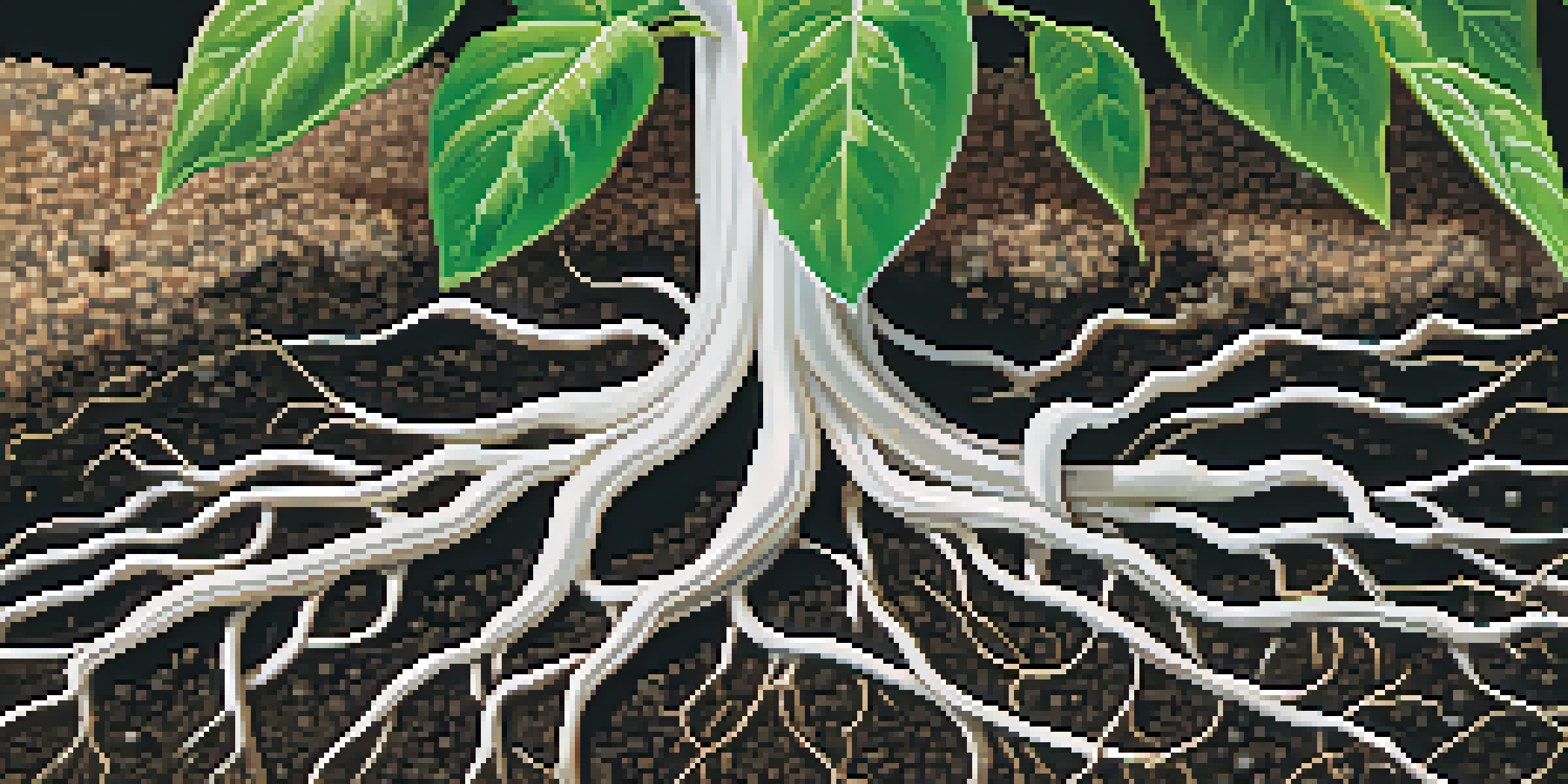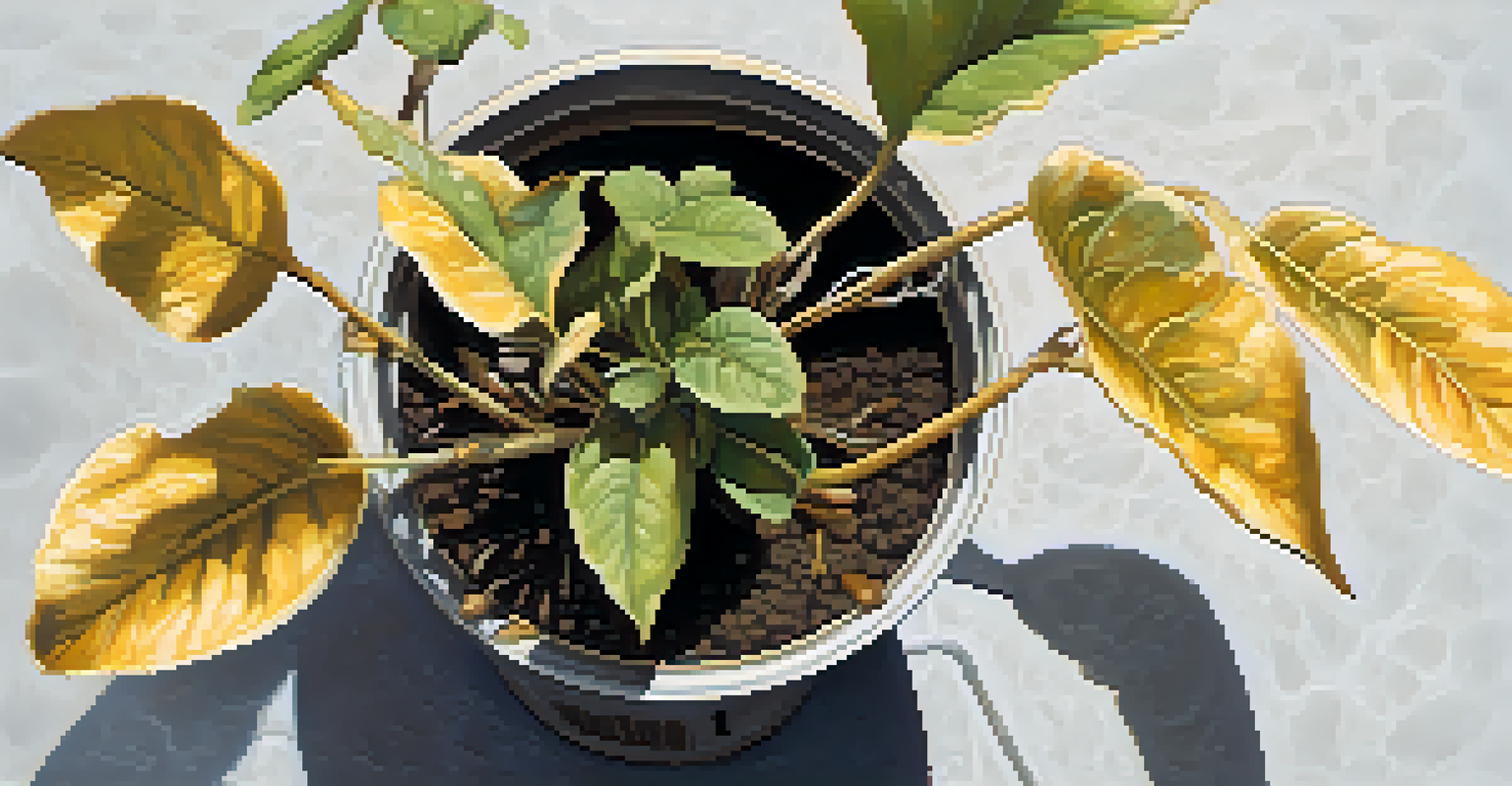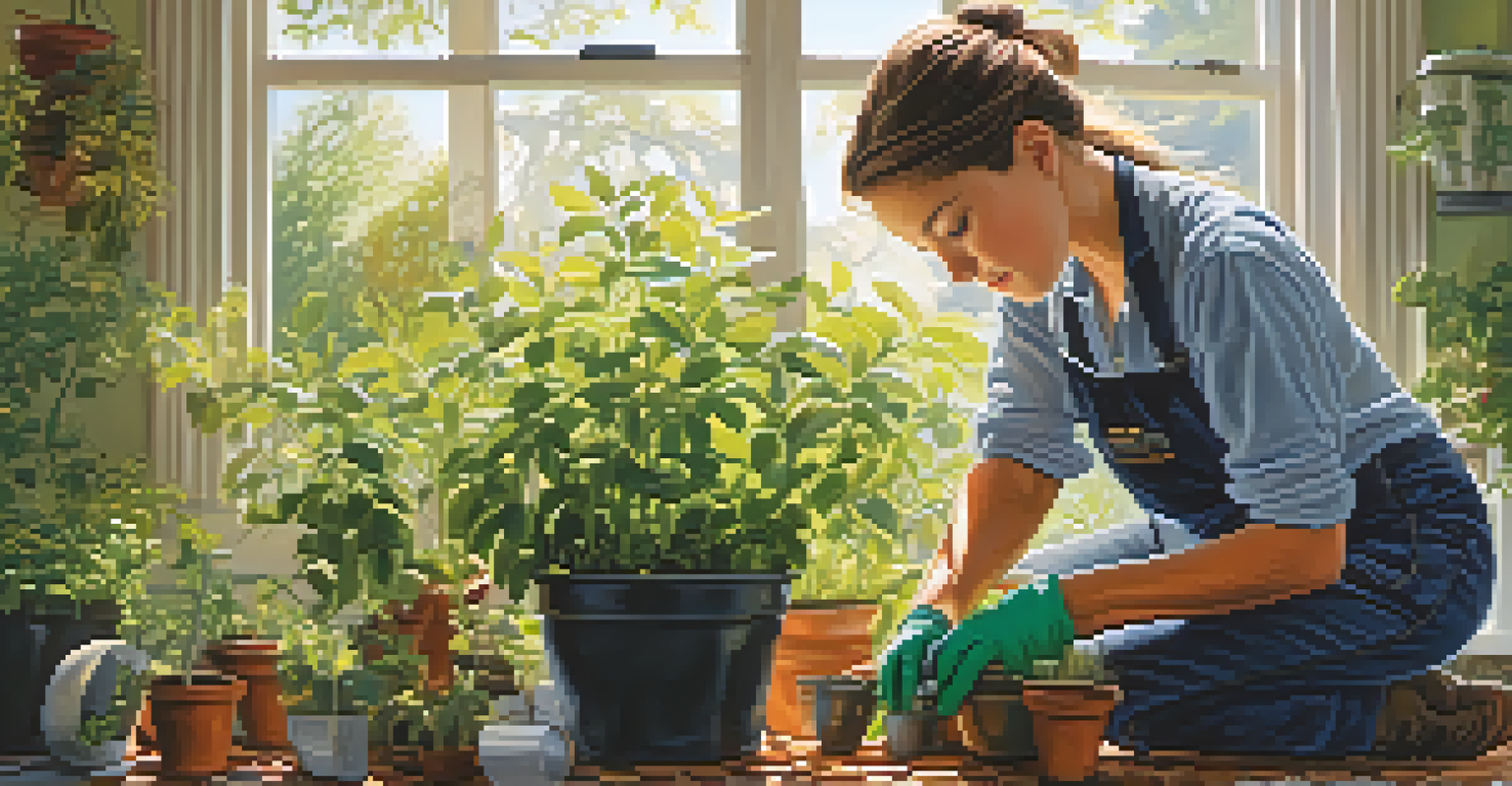How to Combat Root Rot in Potted and Garden Plants

Understanding Root Rot: What It Is and Why It Happens
Root rot is a common problem that affects many potted and garden plants, primarily caused by overwatering and poorly draining soil. When roots sit in waterlogged conditions, they begin to decay, leading to a lack of nutrient absorption and ultimately threatening the plant's health. Certain fungi and bacteria thrive in these damp environments, further exacerbating the issue.
Plants have a way of reminding us that we are not just what we do, but what we care for.
Recognizing root rot early can be the difference between saving your plant and saying goodbye. Symptoms include wilting leaves, yellowing foliage, and a foul smell emanating from the soil. If you notice these signs, it’s crucial to act quickly to assess the root system and determine the best course of action.
By understanding root rot and its causes, you'll be better equipped to prevent it in the future. This knowledge not only helps you maintain healthy plants but also enhances your overall gardening experience, transforming potential setbacks into learning opportunities.
Signs of Root Rot: How to Spot It Early
To catch root rot before it becomes severe, familiarize yourself with its telltale signs. Look for wilting or drooping leaves, even when the soil is wet, as this may indicate the roots are not functioning properly. Additionally, yellowing leaves and stunted growth can signal that your plant is in distress.

Another key sign of root rot is the presence of dark, mushy roots. If you gently remove the plant from its pot and notice that the roots are brown or black instead of a healthy white, it's likely time to take action. A foul or sour odor from the soil is another red flag, indicating decay.
Root Rot: Causes and Symptoms
Root rot primarily results from overwatering and poor drainage, leading to wilting leaves and dark, mushy roots.
Being vigilant and attentive to your plants can help prevent severe damage. Regularly inspecting your plants for these signs allows you to address issues promptly, ensuring they thrive and flourish.
Preventing Root Rot: Best Practices for Healthy Plants
Prevention is the best medicine when it comes to root rot. Start by choosing the right potting mix, as a well-draining soil is essential for healthy root systems. Look for potting mixes that contain perlite or vermiculite, which help improve drainage and aeration.
The best time to plant a tree was twenty years ago. The second best time is now.
Another important factor is watering practices. Overwatering is a primary culprit of root rot, so always check the moisture level before adding more water. A good rule of thumb is to let the top inch of soil dry out before watering again, ensuring your plants receive adequate moisture without drowning.
Lastly, consider the pot itself. Ensure your pots have drainage holes, allowing excess water to escape. Also, avoid placing plants in saucers that can trap water, as this creates a perfect environment for root rot.
Repotting: Saving a Plant from Root Rot
If you suspect your plant has root rot, repotting might be necessary to save it. Start by gently removing the plant from its pot, being careful not to damage the roots. Inspect the root system for any signs of rot, which will appear dark and mushy. Trim away any affected roots with clean shears to prevent further spread.
Once you've removed the rotten roots, it's time to repot. Choose a fresh, well-draining potting mix and a pot with drainage holes. When placing the plant back in the pot, ensure the remaining healthy roots are spread out evenly for optimal growth.
Preventing Root Rot Effectively
Using well-draining soil, proper watering techniques, and pots with drainage holes can significantly prevent root rot.
After repotting, give your plant a break. Water it lightly and place it in a location with indirect sunlight to encourage recovery. With a little care and attention, your plant can bounce back from root rot and continue to thrive.
Choosing the Right Soil: A Key to Healthy Roots
Soil selection plays a vital role in preventing root rot. A well-balanced potting mix that drains well is essential for promoting healthy root growth. Look for options that contain organic materials like compost, perlite, or bark, as these help to retain moisture while allowing excess water to escape.
Avoid using garden soil for potted plants, as it can become compacted and retain too much moisture, increasing the risk of root rot. Instead, opt for a commercial potting mix specifically designed for container gardening, as these are formulated to provide the right balance of moisture retention and drainage.
Regularly refreshing the soil in your potted plants can also help prevent root rot. Over time, soil can lose its structure and drainage capabilities, so consider repotting or adding fresh soil annually to keep your plants healthy and thriving.
Watering Wisely: The Right Amount for Your Plants
Watering is both an art and a science when it comes to plant care. To prevent root rot, it's essential to understand your plants' specific watering needs. Different plants have varying requirements, so research each type to determine how often and how much water they need.
One effective method to ensure you're watering correctly is to use the finger test. Simply insert your finger into the soil about an inch deep; if it feels dry, it's time to water. If it still feels moist, wait a few more days before checking again. This simple technique can help you avoid overwatering and prevent root rot.
Rescuing Plants from Root Rot
If root rot occurs, promptly trim affected roots, repot in fresh soil, and provide a supportive environment for recovery.
Additionally, consider the environmental conditions surrounding your plants. Factors like temperature, humidity, and light can all influence how quickly the soil dries out. By being mindful of these conditions, you can adjust your watering schedule accordingly and keep your plants healthy.
Treating Root Rot: Steps to Rescue Your Plants
If you find that your plants have succumbed to root rot, don't despair—there are steps you can take to treat the problem. First, you'll need to remove the plant from its pot and inspect the root system. Trim away any rotting roots with sterilized scissors, being careful to leave healthy roots intact.
Next, you may want to consider using a fungicide to help combat any fungal infections present in the soil. Follow the manufacturer's instructions carefully to ensure you apply it correctly. Combining this with proper repotting techniques can significantly improve your plant's chances of recovery.

After treatment, give your plant a supportive environment to recover. This might mean placing it in a bright, indirect light location and watering it sparingly until new growth emerges. With patience and care, your plant can bounce back from root rot and flourish once more.